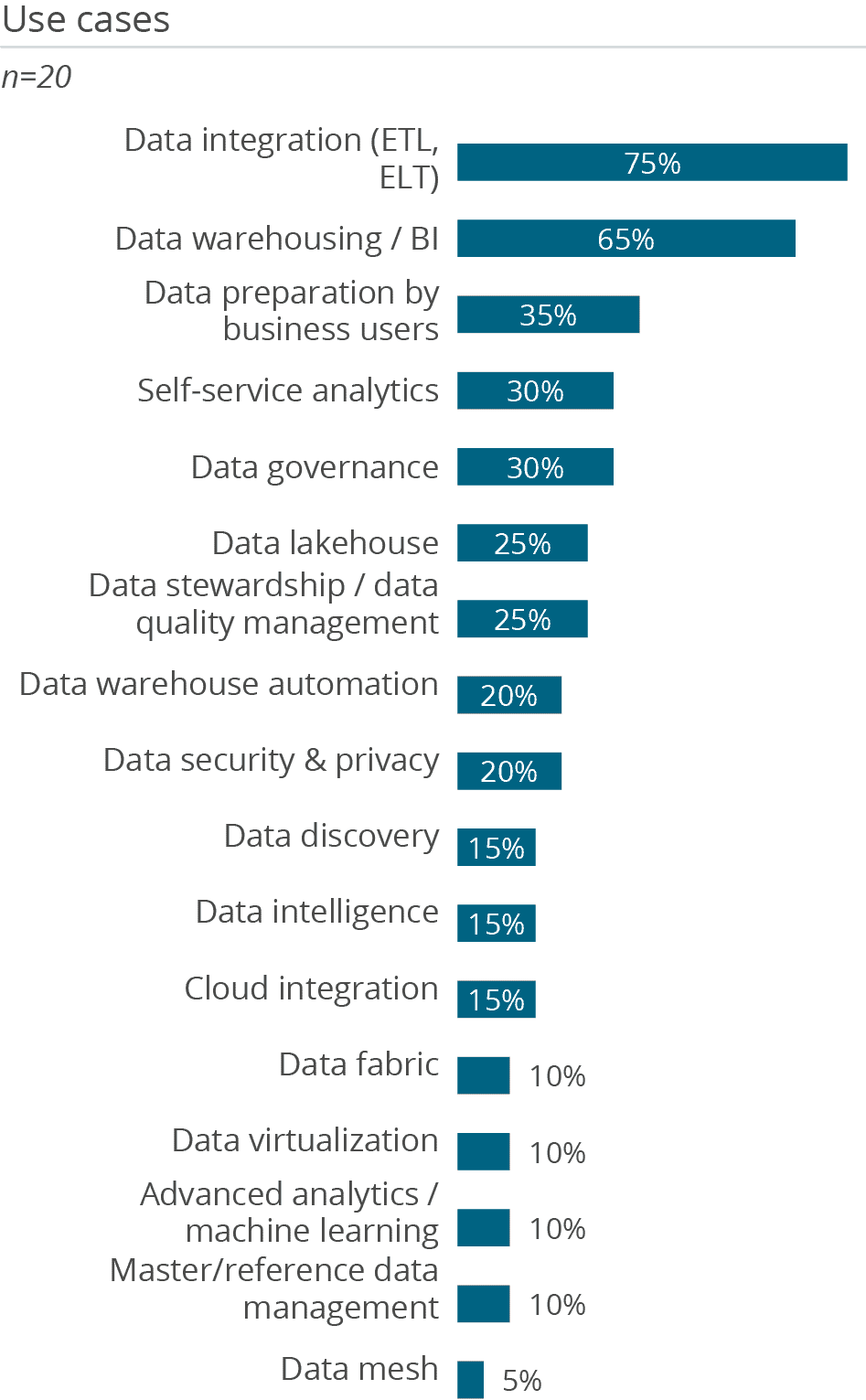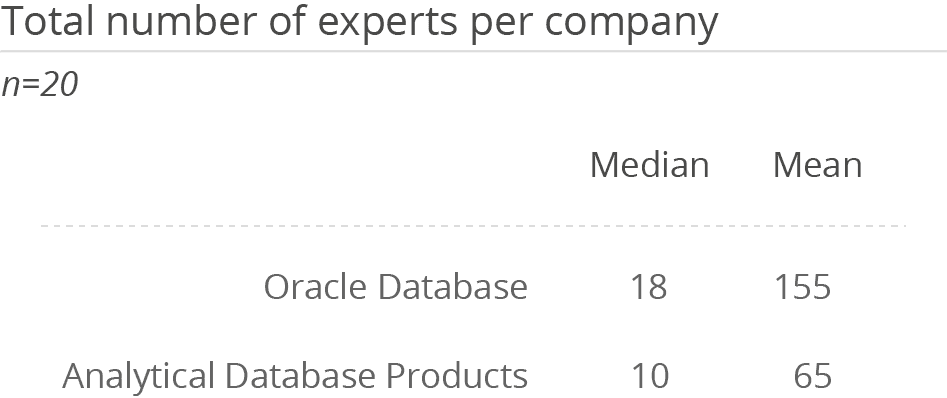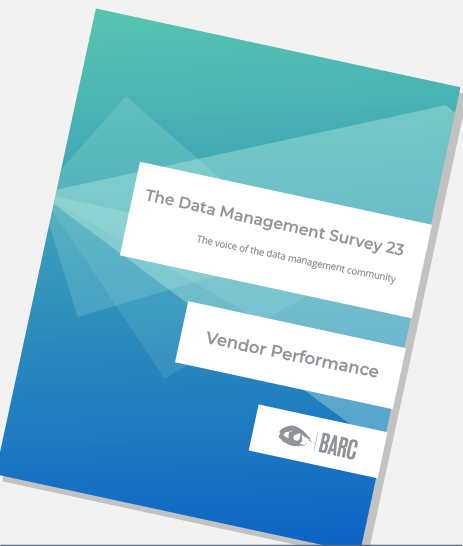Oracle Database
Oracle has long been the world’s largest RDBMS vendor and is now a global provider of enterprise cloud computing, offering modern SaaS, PaaS and IaaS solutions. The company employs more than 164,000 people worldwide. With over 430,000 customers and deployments, Oracle offers a comprehensive stack of data management solutions, enterprise applications and cloud services, as well as platform services and engineered systems.
Over several decades and technology cycles, Oracle has built a very strong foundation and an unmatched footprint in the world of data management, analytics and data-driven business solutions. For many years, the Oracle Database, including the Oracle Data Warehouse Builder, was its primary focus, core competence and main reason for the company’s extraordinarily good reputation. With these tools working together, data warehouse systems could be implemented on a database originally developed for OLTP workloads. The relational database has been developed significantly since version 11 to support analytical workloads while valuable functions and in-memory options have been added. The current version (at the time of writing, 19c is the long-term release and 21c is an innovation release) supports all facets of modern data management, from in-memory to JSON to machine learning. Oracle Database is widely used today, often as the basis for data warehouse systems. Version 21c runs natively in the cloud or on-premises and forms the constantly enhanced basis for Oracle’s Autonomous Data Warehouse.
In the area of data and analytics, the Oracle portfolio includes data integration and data quality solutions, solutions for master data management, industry solutions, IoT solutions and more. For data storage, Oracle offers not only the Oracle Database but also systems optimized for analysis. For on-premises installations, Oracle Exadata and the Oracle Big Data Appliance offer powerful, massively parallel query engines, which are delivered preconfigured with the appropriate hardware. These technologies are also available in the cloud. Here, Oracle pushes the Autonomous Data Warehouse, a cloud database service, which can serve different workloads for BI, analytics and machine learning as well as transactional workloads. In addition, NoSQL database services are available for the implementation of special applications.
The Oracle Database itself is a massively parallel database, which can be distinguished from other databases primarily through its shared disk architecture. In addition to storage on disk, in-memory is also available and storage organization forms optimized for analytics are supported for different data formats. The database has matured over the years so there are numerous configuration options for data management, which allow granular settings. One example is the data protection functions, which permit data anonymization down to field level. In response to the hype around digitalization and the rise of analytics, the Oracle Database has been upgraded to support ‘big data workloads’. This refers primarily to the storage and query of poly-structured data.
With the introduction of Oracle 21c at the end of 2020, Oracle released a new technical generation of its core database platform, containing many improvements, new capabilities and innovations. Oracle 21c is the first release to be designed as a ‘cloud first’ database, supporting deployments as a ‘Cloud Virtual Machine DB System’ (single node or cluster) or as a ‘Cloud Bare Metal DB System’. In the second half of 2021, support for on-premises scenarios was also introduced. With 21c, Oracle follows and strengthens its strategy to offer a ‘converged database’, meaning that all kinds of database paradigms (e.g., relational, time series, graph, spatial, text, OLAP and JSON data) can be delivered from within a single, unified platform. This makes a lot of sense because users can take advantage of the various approaches for different use cases without the need to manage and master multiple technologies or even vendors. This also reduces the need for data movements to a minimum. The data can stay in one place and be processed in many ways. In addition, the new database release supports JavaScript, graph optimizations, in-memory enhancements, dramatic improvements for JSON data processing (increasingly important for API-driven digital business) and also in-database machine learning capabilities. For ultimate performance, Oracle takes advantage of modern hardware capabilities. For example, it supports Intel’s Optane persistent memory and the use of SIMD (‘single instruction, multiple data’) operations for ultra-fast vectorized computations (e.g., for fast hash calculations and hash joins). Hashes are essential for modern ‘agile’ data warehouse management approaches, such as the data vault concept. That said, the wide range of Oracle Database modules, capabilities and configuration options with sometimes overlapping functionality can be confusing for users, especially those who are ‘not so technical’.
Oracle has a strong commitment to cloud and cloud-based architectures. Hence, the most progress in future product development and many innovations will be seen in this area. Its highly integrated ‘converged database’ strategy is something of a bet against the modern cloud native database paradigms, where data and compute are strictly separated, and ideally universal file formats (e.g., Parquet) and any query engine (e.g., SQL, Spark etc.) can be used. But when it comes to OLTP and certain complex data warehouse processing tasks, a ‘native’ database such as Oracle still has an advantage over the newer technologies.
Overall, Oracle offers a solid, versatile and performant data management platform, which should especially be considered by companies who do not want to tackle multiple technologies for the sake of supporting diverse data management and analytics use cases. Companies already familiar with Oracle might want to take a deeper look at its new platform capabilities before moving over. “We can do it all” seems to be what Oracle is striving for – from OLTP, OLAP and advanced analytics at scale to digital uses cases such as IoT and data-as-a-service offerings.

User & Use Cases
The main purpose of the Oracle Database is clearly data integration and data warehousing/BI, as it has been used in this way for years. Although there is a multi-storage concept implemented to provide a single platform for multiple use cases, customers are not using it to a great extent. While data storage and data integration are easy to understand, the use of the database for data preparation is surprising. For years, Oracle Database has been known as a platform that is highly configurable to a very deep technical level. But this configurability also has its downsides: it requires expert, highly skilled, technical people. And that is reflected in the experience we have had with Oracle in the market. The finding that business users in 35 percent of companies perform data preparation with Oracle databases is not what we expected.
The Oracle Database is mainly used in large and midsize companies. With a mean average of over 10,000 supported users, Oracle demonstrates beyond doubt that it is suitable for large scenarios. This is the highest average number of users in the Analytical Database Products peer group in this year’s survey. The figures show that Oracle installations are widespread within companies and implementations are rather strategic in character. This is underlined by the fact that 35 percent of surveyed users use the software several times a week, while 50 percent are using the software several times a day.
The Oracle Database is mainly used in on-premises deployments or virtual environments.





Want to see the whole picture?
BARC’s Vendor Performance Summary contains an overview of The Data Management Survey results based on feedback from Oracle Database users, accompanied by expert analyst commentary.
Contact us to purchase the Vendor Performance Summary- Register for a free sample Vendor Performance Summary download
- If you have any questions, feel free to contact us
